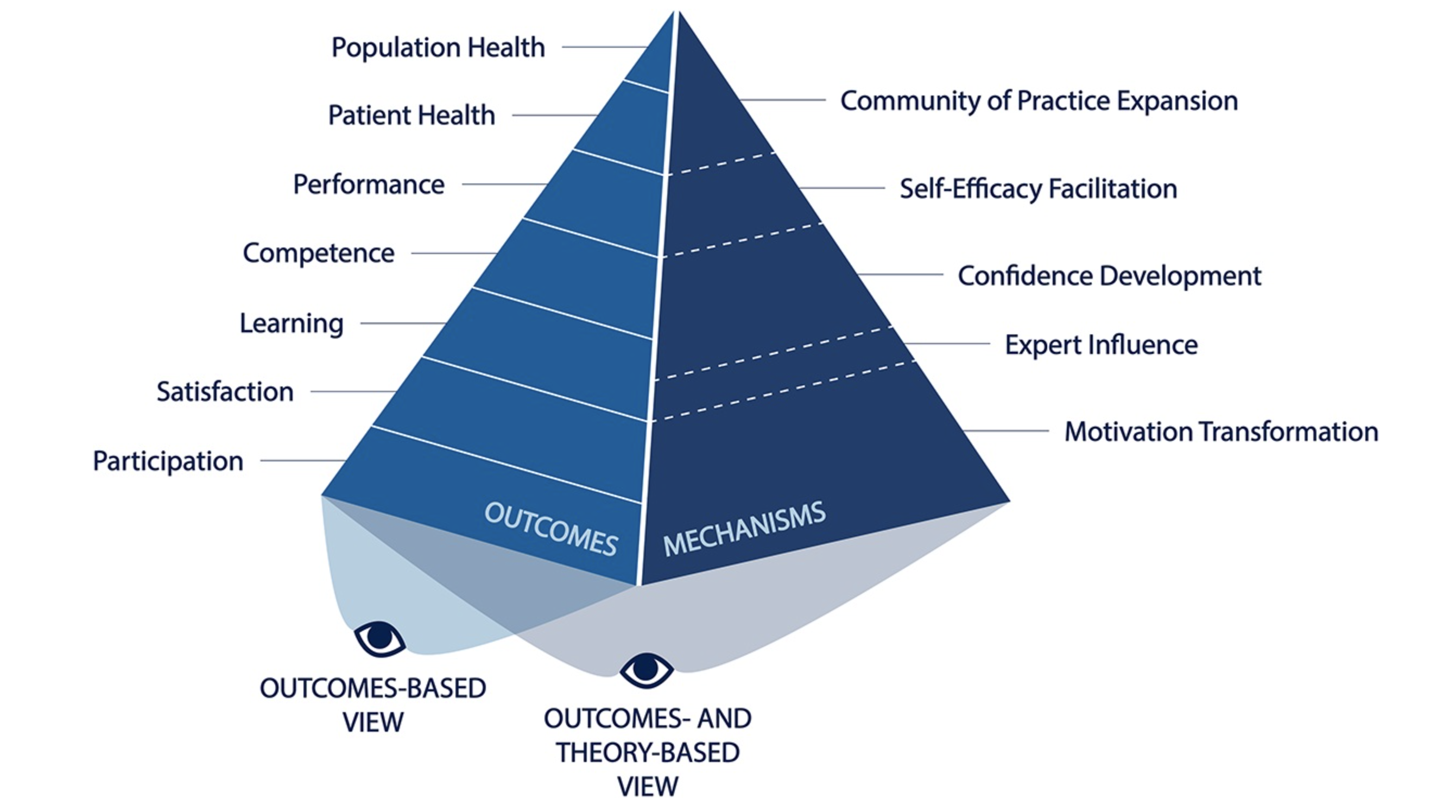From Two Dimensions to Multidimensions: A Mechanistic Model to Support Deliberate CPD Development, Coordination, and Evaluation

From Two Dimensions to Multidimensions: A Mechanistic Model to Support Deliberate CPD Development, Coordination, and Evaluation

Citation
Sachidanandan G, Sud A. From Two Dimensions to Multidimensions: A Mechanistic Model to Support Deliberate CPD Development, Coordination, and Evaluation. J Contin Educ Health Prof. 2023 Sep 28. doi: 10.1097/CEH.0000000000000527. Epub ahead of print. PMID: 37782259.
Abstract
Introduction: The effectiveness of continuing professional development as an intervention to improve health professional behavior and patient health is variable and contentious. To clarify the causal relationships underlying program outcomes and facilitate a necessary shift from outcomes-only-based approaches to outcome-based and theory-based approaches in program development and evaluation, we developed a model of mechanisms mapped to relevant outcomes.
Methods: Mechanisms identified in a prior realist synthesis of opioid agonist therapy continuing professional development programs were iteratively tested and refined using purposive and opportunistic sampling and realist approaches against two systematic reviews of programs in analgesic prescribing and palliative care. Further testing involved practical application within programs in sustainable health care and pain management.
Results: Ninety reports on 75 programs and practical application to multiple additional programs informed the final model consisting of five distinct mechanisms: motivation transformation, expert influence, confidence development, self-efficacy facilitation, and community of practice expansion. The mechanisms and related analysis emphasize that continuing professional development is heterogeneous, complex, and context dependent.
Discussion: Shifting toward outcome-based and theory-based approaches facilitates further conceptual shifts at intraprogram and interprogram and interintervention levels toward more deliberate program development and evaluation, increased program complementarity and subsequent collaboration. It clarifies opportunities for intercalation of continuing professional development with other intervention sciences. The model presents a resource for practitioners, researchers, and policymakers to advance continuing professional development planning, coordination, and evaluation.
Link